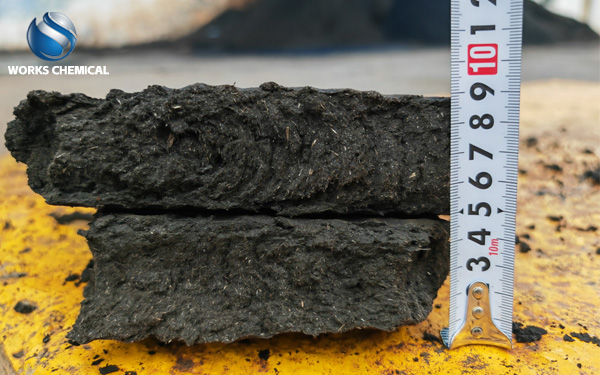
In the papermaking industry and municipal sewage treatment fields, sludge treatment has always been a key link in environmental governance and resource recycling. Traditional sludge treatment processes often encounter challenges such as high moisture content, high disposal costs, and significant risks of secondary pollution. However, the emergence of sludge efficiency improvers has provided an innovative solution for optimizing sludge properties and enhancing treatment efficiency. This article will analyze how sludge enhancers reshape the characteristics of sludge and promote the green transformation of the industry from three aspects: technical principles, application effects, and industry value.

I. The technical core of sludge enhancer: Multi-dimensional optimization of sludge properties
Sludge enhancer is a compound chemical additive. Its mechanism of action covers multi-dimensional synergistic effects in physical, chemical and biological aspects, and specifically improves the following core properties of sludge:
Breakthrough in dehydration performance
The high moisture content of sludge (usually >80%) is the main reason for the high treatment cost. The enhancer rapidly disrupts the colloidal stability of sludge through charge neutralization and bridging effects, promoting the flocculation of tiny particles into large ones and forming dense flocs. Experimental data show that after the use of sludge enhancers, the specific resistance of sludge is reduced by 50% to 70%, the dewatering time of plate and frame filter press is shortened by 40%, and the final moisture content can be reduced to below 50%, significantly improving the mechanical dewatering efficiency.
Improvement of rheological properties
Traditional sludge has high viscosity and poor fluidity, which is prone to clogging pipelines and equipment. The skeleton-building components in the sludge enhancer can form a three-dimensional network structure, enhancing the strength of the sludge skeleton while reducing its viscosity. This makes the sludge easier to pump and stir during transportation and treatment, reducing equipment wear and energy consumption.
Passivation by harmful substances
Papermaking sludge often contains risk substances such as heavy metals and organic pollutants. Some sludge enhancers fix heavy metal ions in flocs through chelation and stabilization effects, reducing the risk of leaching. Meanwhile, it destroys the molecular structure of organic matter, reduces odor and biological toxicity, and helps sludge meet the requirements of the "Sludge Disposal Standard for Municipal Wastewater Treatment Plants" (GB/T 23484).
The potential for resource utilization has been enhanced
The calorific value of the optimized sludge increases by 10%-20%, making it more suitable for the incineration power generation process. The improvement of organic matter content and pore structure has also significantly enhanced its utilization value as a raw material for building materials (such as brick-making and cement admixtures) or as a soil conditioner.
Ii. Application Effectiveness: From cost reduction to environmental protection compliance
The processing cost has been significantly reduced
Chemical cost: The sludge enhancer replaces the traditional combination of "PAM+ lime + ferrous sulfate", reducing the types of chemicals by 60% and lowering the overall cost by 20% to 30%.
Energy consumption and labor: The improvement of dehydration efficiency has shortened the operating time of the equipment, and the electricity cost and labor cost have decreased simultaneously.
Disposal costs: Sludge is reduced by 40% to 60%, directly lowering transportation, landfill or incineration costs.
Process compatibility and operational convenience
Immediate use: No pre-dissolution or equipment modification is required. It can be directly added to the sludge tank or the feed end of the dewatering equipment in proportion (usually 0.5%-2% of the dry sludge volume).
Strong adaptability: It is suitable for various equipment such as plate and frame filter presses, belt filter presses, and centrifuges, and has wide compatibility with pH values (5-10) and sludge types (deinking sludge, black liquor sludge from pulp making, etc.).
The environmental protection benefits are remarkable.
After sludge disposal, the leaching concentration of heavy metals is lower than the limit value, and the degradation rate of organic pollutants reaches over 90%, which helps enterprises pass environmental protection acceptance.
Reduce the use of alkaline agents such as lime to lower the risk of scaling in the treatment system and the fluctuation of wastewater pH.
Iii. Case Evidence: Synergists Drive Industrial Upgrading
Application example of a medium-sized paper mill:
The factory produces 120 tons of sludge per day. Originally, it was treated with "polyacrylamide + lime", but the moisture content was still as high as 78%, and the disposal cost was 320 yuan per ton.
After switching to the sludge enhancer:
Dewatering effect: The moisture content is reduced to 55%, and the sludge volume is decreased by 55%.
Cost changes: The cost of chemicals has decreased by 28%, and the comprehensive treatment cost has dropped to 230 yuan per ton, saving over 4 million yuan annually.
Resource utilization path: After optimization, the sludge replaces part of the coal for boiler combustion, reducing carbon emissions by 800 tons annually.
Conclusion
Sludge enhancers, by precisely regulating the physical, chemical and biological properties of sludge, not only break through the efficiency and cost bottlenecks of traditional treatment processes, but also open up a new window for the resource utilization of sludge. Under the background of "waste-free cities" and circular economy, this technology will become a key piece of the puzzle for the green transformation of fields such as papermaking and municipal services, promoting the transformation of sludge from an "environmental burden" to a "second resource".